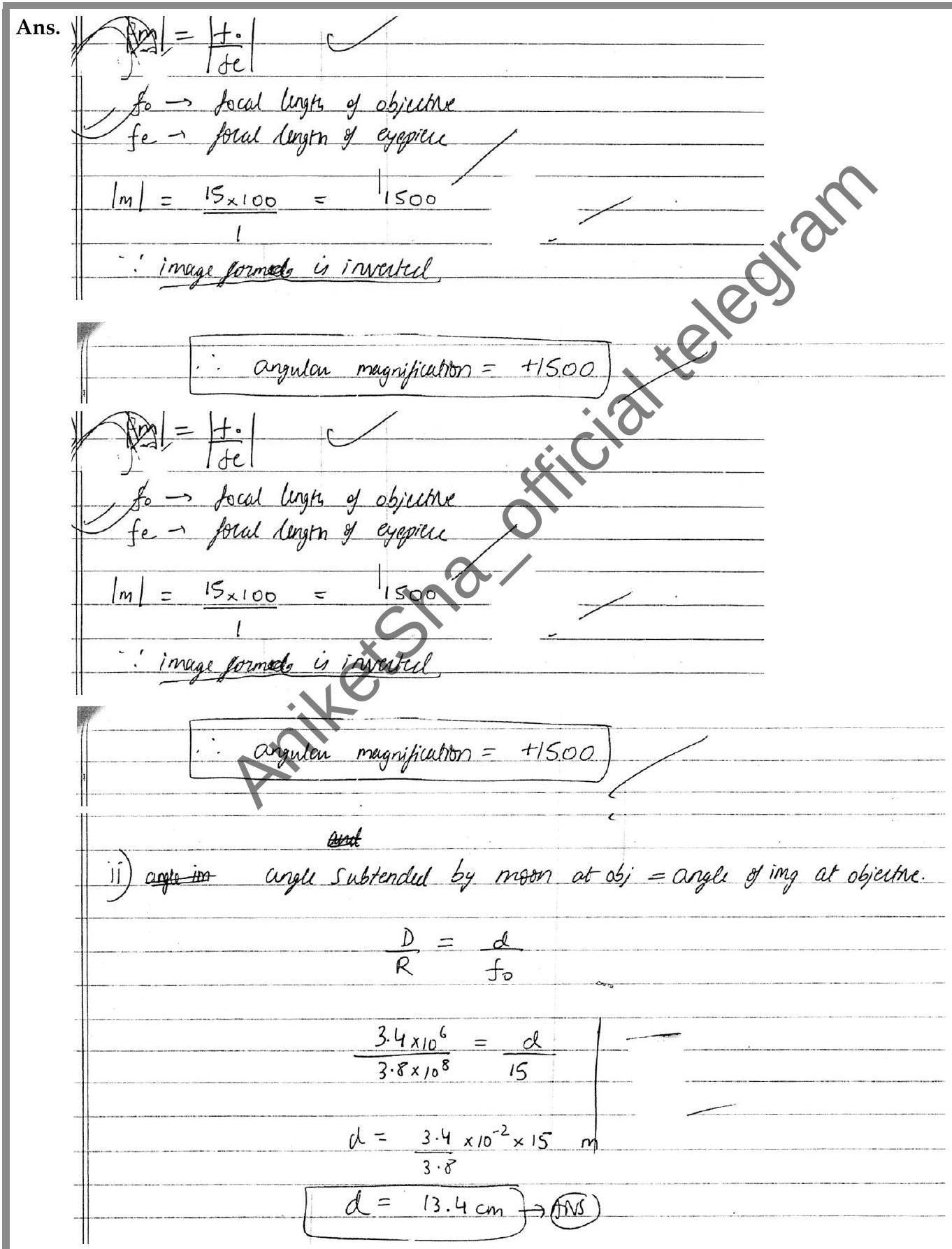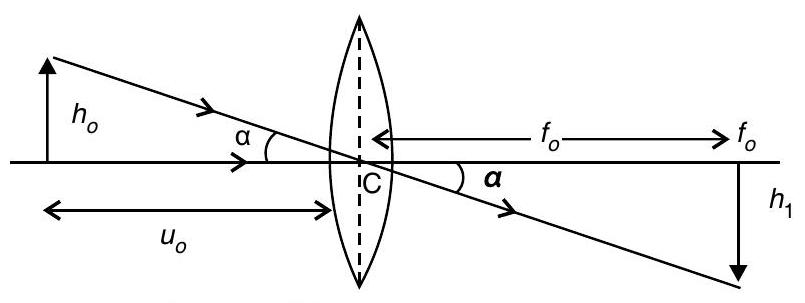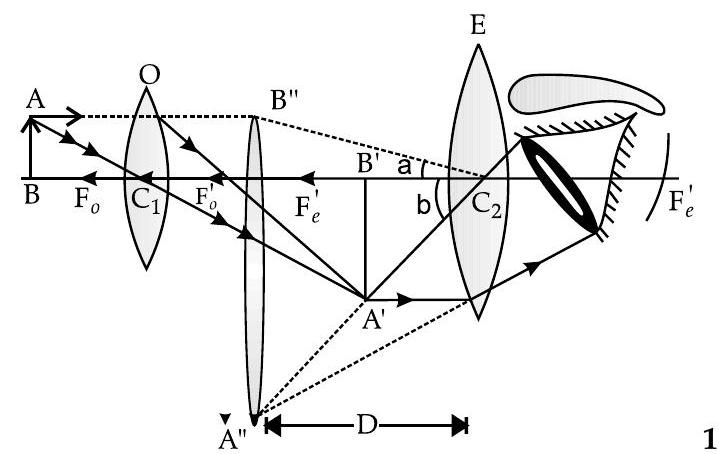ray-optics-and-optical-instruments Question 43
Question: Q. 4. (i) A giant refracting telescope has an objective lens of focal length
(ii) If this telescope is used to view the moon, what is the diameter of the image of the moon formed by the objective lens? The diameter of the moon is
A [Delhi I, II, III 2015]

Detailed Answer :
(i)

(ii) Angular size of the moon,
Angular size of the moon’s image by objective lens is also,
Hence,
Answering Tip
- Learn all the formulae of Telescope carefully. Do practice to solve the humericals by taking care of their sign convention.
Q. 5. (i) Draw a labelled ray diagram showing the formation of a final image by a compound microscope at the least distance of distinct vision.
(ii) The total magnification produced by a compound microscope is 20 . The magnification produced by the eye piece is 5 . The microscope is focussed on a certain object. The distance between the objective and eyepiece is observed to be
If the least distance of distinct vision is
A [Delhi I, II, III 2014]
Show Answer
Solution:
Ans. (i) Labelled ray diagram of a compound microscope for formation of image at the near point of the eye :

(ii) Given,
For eyepiece,
Hence, focal length of eyepiece,
For objective lens,
Hence, focal length of objective,






